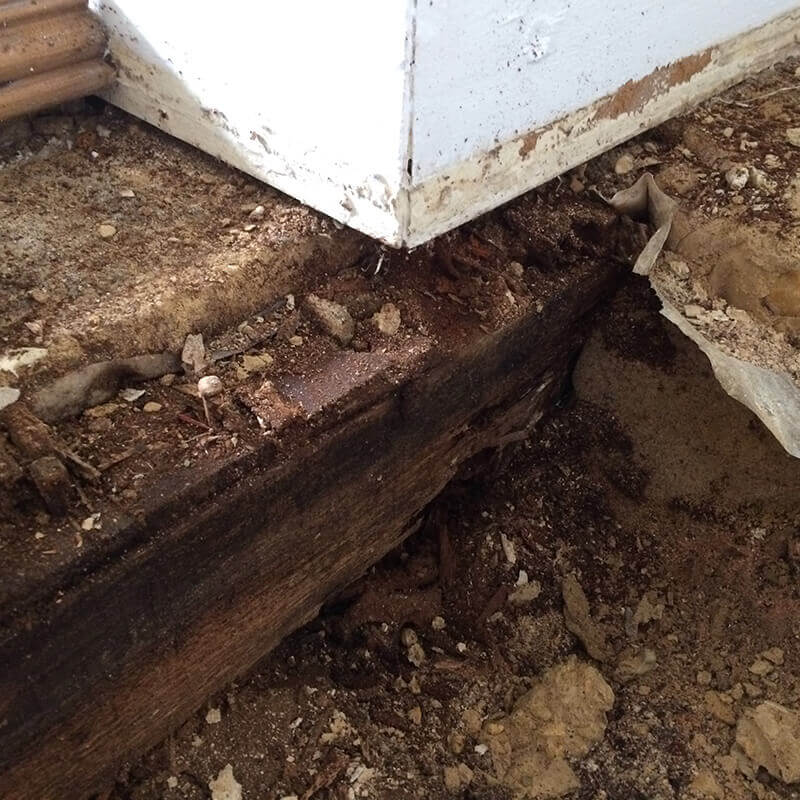Contact Us
Wet rot Salisbury can occur more frequently than dry rot, however it is usually less serious. The decay is typically confined to the area where timber has become (and remains) damp for prolonged periods of time. Outbreaks of dry rot and wet rot begin in similar ways. Wet rot is not as destructive as dry rot; however it can, and does, lead to severe structural damage. Some of the most common contributing factors to the outbreak of wet rot Salisbury are:
Whilst there are a number of types of wet rot, the most commonly occurring species are Coniophora Puteana and Poria Vaillantii. Whilst each fungus has its own unique features, the general appearance and treatment often remain similar. Whilst most wet rot fungi produce strands, it is typically confined to the area of dampness. Although in rare instances, mycelium can develop extensively, it does not usually spread into the walls nor exceed further than its immediate food source, unlike dry rot.
The fruiting bodies of wood-decaying fungi can produce large amounts of microscopic spores, which, when dispersed by air circulation, can affect damp, untreated timber. These spores infect the untreated timber by pushing out a hollow tube, which grows and branches to form a mass of hyphal threads called Mycelium. This continues to develop within the timber, breaking down the wood for food. The timber will usually darken in colour and develop a cracked-like appearance. Eventually, the timber will lose its strength and stability and, in some cases, become unsafe.



Protecting your home against possible outbreaks is strongly recommended. To help prevent wet rot, it is advisable to ensure that all external timbers, including doors and windows, are protected from rainwater. One must also undertake regular maintenance and the re-application of timber preservatives and paints to ensure sufficient protection against adverse weather conditions.
Other recommendations include: periodic checks to gutters and downpipes ensuring that all are free from defects and leaks; ensuring that there is sufficient sub-floor ventilation to the property, and that this remains unblocked and free from debris; and ensuring that all new timbers introduced to the property are isolated from masonry and/or damp substrates with the use of physical DPC. Where possible, it is strongly recommended that any replacement structural timbers are installed using pressure treated timber.
Specialist timber treatments should be carried out in strict accordance with the PCA Code of Practice for Remedial Timber Treatment by an experienced and qualified technician.
Biocraft South West use specially formulated preservatives that allow for the successful eradication of wet rot Salisbury. To arrange a survey of your property or for further information regarding timber decay contact us today on 01722 626850